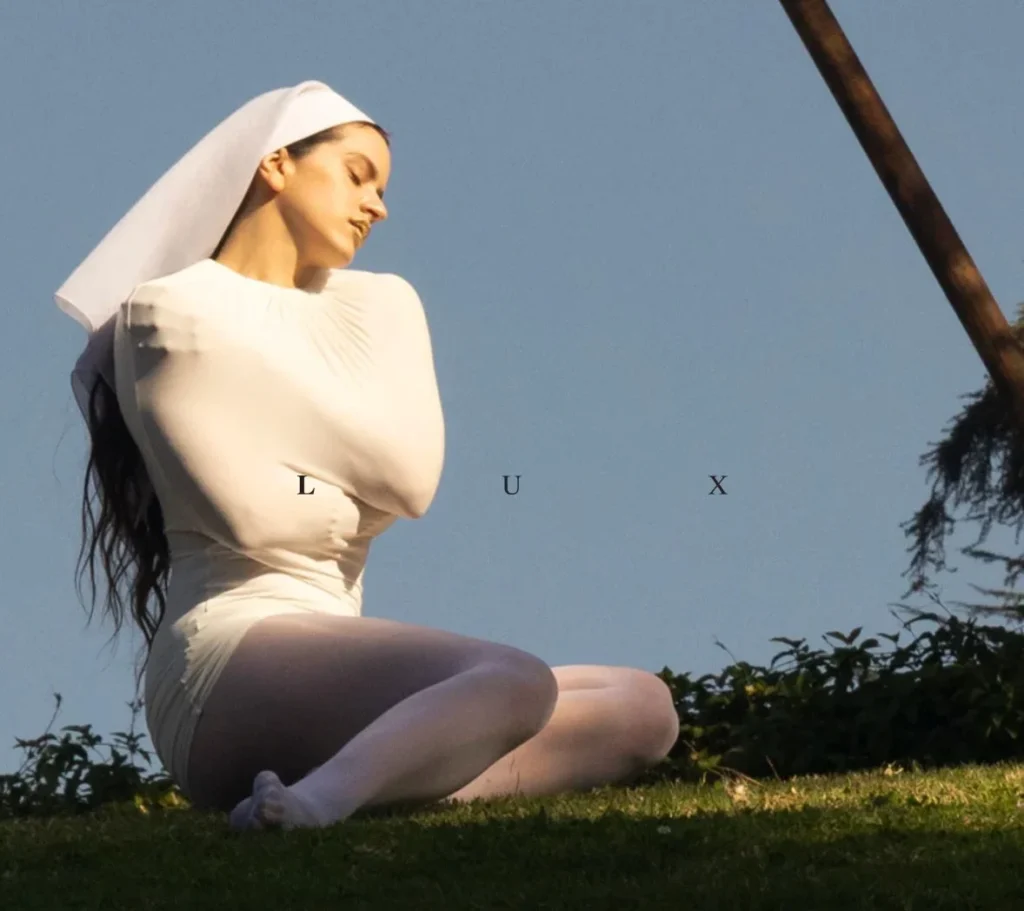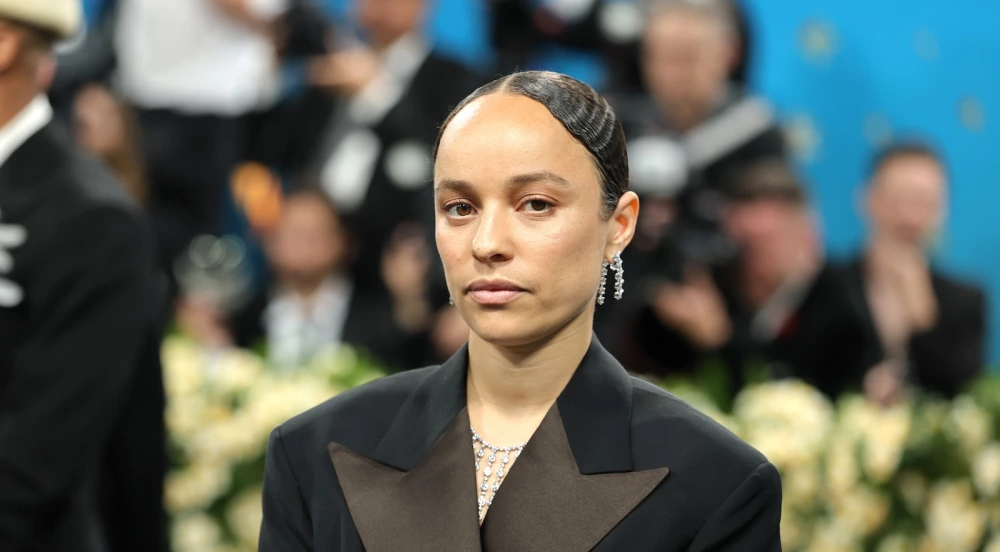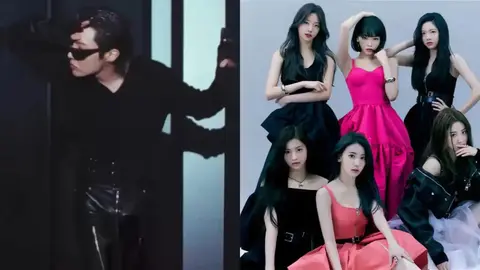Three years after Motomami shattered pop conventions, Rosalía is stepping into a different kind of spotlight. LUX — her fourth studio album, due November 7 2025 via Columbia Records — promises illumination both literal and spiritual. The title, Latin for “light,” feels like a mission statement. If Motomami was chaotic energy, the sound of reinvention and rebellion, LUX arrives as its luminous counterpoint: reflective, composed, and transcendental.
Announced through cryptic billboards in New York’s Times Square and Madrid’s Plaza de Callao, the campaign unfolded like a revelation. No tagline, no teaser single, just the word LUX in gold serif across white fabric. The artist herself appeared at the Madrid unveiling dressed in a monastic white gown, lips painted gold, hair shaped into a radiant halo. The imagery told us enough — this is Rosalía reborn.
ROSALÍA’s new album will be released on November 7. pic.twitter.com/5ReptKUMmp
— ROSALÍA UPDATE (@updaterosalia) October 20, 2025
from chaos to clarity
When Motomami debuted in 2022, it broke nearly every rule of pop architecture. Its fragmented form, nonlinear sequencing, and genre collisions redefined what a pop record could be. It wasn’t just an album — it was a thesis on femininity, identity, and sonic freedom.
Since then, Rosalía has become both muse and myth: performing at Coachella, collaborating with Travis Scott and Tokischa, producing short films, even dabbling in operatic composition. Yet, the artist hinted that her next chapter would seek simplicity — not in sound, but in purpose.
“I wanted to make something that felt pure,” she told Spanish radio in June. “Motomami was the storm. LUX is what comes after you survive the storm.”
This duality — darkness giving way to radiance — frames LUX as more than a follow-up. It’s a spiritual inversion. Where Motomami was dirt and diamonds, LUX appears to be candlelight and cathedral glass.
structure
LUX unfolds across four movements rather than traditional tracks, each representing a state of emotional metamorphosis. Early reports from Columbia Records describe the album as “a widescreen emotional arc of feminine mystique, transformation, and transcendence.”
Rosalía produced the record herself alongside Icelandic composer Daníel Bjarnason, known for his cinematic work with Sigur Rós and the London Symphony Orchestra — both collaborators here. The orchestral dimension marks a significant departure from Motomami’s digitized hyper-pop palette. Instead, LUX seems to merge sacred choral textures with experimental rhythm — somewhere between Hildegard von Bingen and Björk’s Vespertine.
Recording sessions reportedly took place between London, Barcelona, and Mexico City. Analog synths meet string quartets; flamenco hand-claps echo beneath Gregorian-style chants. The fusion sounds improbable, yet entirely within Rosalía’s wheelhouse — an artist who treats contradiction as composition.
ensemble
The guest list is celestial. Icelandic icon Björk, art-pop provocateur Yves Tumor, fado legend Carminho, and flamenco royalty Estrella Morente all lend their voices to LUX. Choral contributions come from the Escolania de Montserrat boys’ choir and the Palau de la Música Catalana ensemble.
Rosalía’s long-time sound engineer Dylan Patrón and creative director Pili Romo return, ensuring continuity from the Motomami era. The cross-genre blend hints at the artist’s long-standing fascination with duality — sacred and profane, street and scripture, tradition and technology.
Even the rumored track titles — “Porcelana,” “Mío Cristo,” “La Perla,” and “Berghain” — suggest a movement between fragility, devotion, luxury, and excess. If these names hold, LUX will read like a modern mass for the club generation.
a visual
Rosalía’s artistic vision has always extended beyond sound. Each album she’s released has functioned as a visual ecosystem. For LUX, her imagery leans into ecclesiastical symbolism — light refracted through gold, the body as altar, sin as illumination.
Photographer Daniel Sannwald reportedly shot the album art, capturing Rosalía in chiaroscuro tones against alabaster fabric. She stands motionless, palms outward, eyes upturned. It’s both Madonna and martyr — a posture that recalls Renaissance altarpieces while reframing pop stardom as sanctification.
The choice of aesthetic isn’t arbitrary. Light has long been Rosalía’s metaphor for knowledge and self-possession. In the wake of Motomami’s chaos, LUX appears to reclaim purity not as innocence, but as awareness — the clarity that follows collapse.
industry
With this release, Rosalía moves decisively into art-pop territory once occupied by Madonna, Kate Bush, and FKA twigs — artists who fuse spectacle with subversion. Yet unlike her predecessors, she arrives already global, already multilingual, already mythic.
Columbia Records has positioned LUX as a “conceptual global pop statement.” The rollout strategy reflects this: limited-edition physical formats with exclusive tracks, immersive pop-up installations, and a rumored one-night performance inside a deconsecrated church in Barcelona to coincide with release day.
Commercially, expectations are high. Motomami surpassed a billion streams; LUX will test whether audiences follow Rosalía into more avant-garde terrain. But her brand has matured beyond virality — she’s now in the business of cultural permanence.
culture
In an era when pop often mirrors algorithmic simplicity, LUX seems determined to restore mystery. It asks listeners to surrender attention rather than scroll. The album’s Latin title, the orchestral gravitas, and the return to physical-only songs all resist the logic of streaming culture.
For Spanish and Latin music, the record also signals a continued expansion of what’s possible. Rosalía began by reimagining flamenco; now she’s reframing the idea of pop itself. Her work echoes the hybridity of contemporary identity — local yet universal, intimate yet monumental.
If Motomami was an act of self-definition, LUX is self-dissolution: the ego dissolved in light.
impression
Rosalía is expected to perform select tracks from LUX during a series of televised appearances and fashion-aligned events in Paris and Milan this November. A global tour, tentatively titled “The Light Cycle,” is planned for spring 2026, featuring immersive stage design by Es Devlin.
Either LUX becomes her magnum opus or her most divisive work remains to be seen. But in refusing to repeat herself, Rosalía reaffirms her place among the few contemporary artists who treat pop not as a genre, but as a living experiment.
“Light is truth,” she said in a recent interview. “And truth isn’t always pretty — but it’s always real.”
When LUX finally arrives, it won’t just be an album release. It should be a reckoning — the moment Rosalía turns the glare of fame inward, and shines it back out into the world.
No comments yet.








